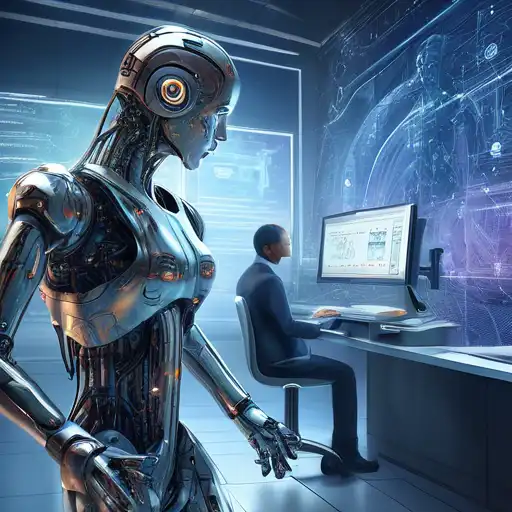Introduction to AI and Machine Learning
In the rapidly evolving world of technology, Artificial Intelligence (AI) and Machine Learning (ML) are two terms that often come up in conversations. While they are closely related, they are not the same thing. This article aims to demystify these concepts and highlight the key differences between them.
What is Artificial Intelligence?
Artificial Intelligence is a broad field of computer science focused on creating systems capable of performing tasks that typically require human intelligence. These tasks include problem-solving, recognizing speech, learning, planning, and understanding natural language. AI can be categorized into two types: narrow AI, which is designed to perform a narrow task (e.g., facial recognition or internet searches), and general AI, which can perform any intellectual task that a human being can.
What is Machine Learning?
Machine Learning is a subset of AI that provides systems the ability to automatically learn and improve from experience without being explicitly programmed. ML focuses on the development of computer programs that can access data and use it to learn for themselves. The process of learning begins with observations or data, such as examples, direct experience, or instruction, to look for patterns in data and make better decisions in the future based on the examples that we provide.
Key Differences Between AI and Machine Learning
While AI and ML are often used interchangeably, there are distinct differences between the two. AI is the broader concept of machines being able to carry out tasks in a way that we would consider "smart". Machine Learning is a current application of AI based around the idea that we should really just be able to give machines access to data and let them learn for themselves. Here are some key differences:
- Scope: AI has a broader scope than ML. AI is about creating intelligent machines that can simulate human thinking capability and behavior, whereas ML is about learning from data.
- Goals: The goal of AI is to create systems that can perform a variety of complex tasks, while the goal of ML is to create systems that can learn from data to improve their performance on a specific task.
- Dependency: AI systems do not necessarily have to learn from data; they can be rule-based. ML, on the other hand, is entirely dependent on data.
Applications of AI and Machine Learning
Both AI and ML have a wide range of applications across various industries. AI is used in healthcare for diagnosing diseases, in finance for fraud detection, and in automotive for self-driving cars. ML is used in email filtering, recommendation systems (like those on Netflix or Amazon), and understanding human speech (like Siri or Alexa).
Conclusion
Understanding the difference between AI and Machine Learning is crucial for anyone looking to delve into the field of technology. While AI is the broader science of mimicking human abilities, Machine Learning is a specific subset of AI that trains a machine how to learn. Both are driving the future of technology and have the potential to transform every aspect of our lives.
For more insights into the world of technology, check out our articles on Data Science and Tech Trends.
